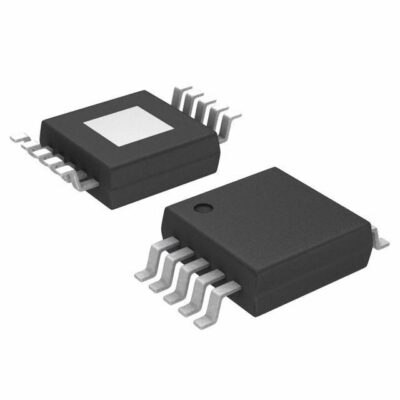TPS54160ADGQR
Part Number: TPS54160ADGQR
Manufacturer: Texas Instruments
Description: IC REG BUCK ADJ 1.5A 10MSOP
Shipped from: Shenzhen/HK Warehouse
Stock Available: Check with us
ICRFQ.com - Electronic Components Distributor in China Since 2003

Part Number: TPS54160ADGQR
Manufacturer: Texas Instruments
Description: IC REG BUCK ADJ 1.5A 10MSOP
Shipped from: Shenzhen/HK Warehouse
Stock Available: Check with us
| Datasheet | |
|---|---|
| Category | Integrated Circuits (ICs) |
| Family | PMIC – Voltage Regulators – DC DC Switching Regulators |
| Manufacturer | Texas Instruments |
| Series | Eco-Mode? |
| Packaging | Tape & Reel (TR) |
| Part Status | Active |
| Function | Step-Down |
| Output Configuration | Positive |
| Topology | Buck |
| Output Type | Adjustable |
| Number of Outputs | 1 |
| Voltage – Input (Min) | 3.5V |
| Voltage – Input (Max) | 60V |
| Voltage – Output (Min/Fixed) | 0.8V |
| Voltage – Output (Max) | 58V |
| Current – Output | 1.5A |
| Frequency – Switching | 100kHz ~ 2.5MHz |
| Synchronous Rectifier | No |
| Operating Temperature | -40°C ~ 150°C (TJ) |
| Mounting Type | Surface Mount |
| Package / Case | 10-TFSOP, 10-MSOP (0.118″, 3.00mm Width) Exposed Pad |
| Supplier Device Package | 10-MSOP-PowerPad |
The TPS54160ADGQR9 is an adaptable and powerful Buck Switching Regulator IC that provides accurate voltage regulation and effective power conversion. This multipurpose device features a 1.5A current rating, a 10-PowerTFSOP/10-MSOP package, and an adjustable positive output voltage. An in-depth grasp of the TPS54160ADGQR9’s characteristics, operating concepts, applications, and design considerations is the goal of this thorough manual.
The highly effective and dependable TPS54160ADGQR9 Buck Switching Regulator IC is made to deliver precise voltage regulation and power conversion for a wide range of electronic applications. This IC offers versatility and adaptability to meet various power requirements thanks to its positive adjustable output voltage range starting at 0.8V and a current output capability of 1.5A.
The TPS54160ADGQR9’s remarkable efficiency, which assures minimal power dissipation and optimum energy use, is one of its most notable qualities. This efficiency makes it the perfect option for space-constrained systems where size and thermal control are crucial. It also comes in a small 10-PowerTFSOP/10-MSOP packaging.
The TPS54160ADGQR9 is suitable for various applications, including but not limited to:
A buck switching regulator, a type of DC-DC converter that effectively lowers higher input voltages to lower output voltages, is how the TPS54160ADGQR9 functions. To maintain the correct output voltage level precisely, it uses a pulse-width modulation (PWM) control approach. It also uses a current mode control technique to maintain responsiveness and stability even under a variety of load scenarios.
The IC also includes soft-start technology, which guarantees a regulated and smooth startup procedure to avoid unexpected current spikes and voltage overshoots during power-on.
The TPS54160ADGQR9 operates on the principles of a buck-switching regulator, which is a type of step-down DC-DC converter. Its architecture efficiently converts higher input voltages to lower output voltages by controlling the duty cycle of a switching element, typically a MOSFET. Let’s dive into the operating principles in detail:
The buck-switching regulator consists of the following essential components:
The Pulse-Width Modulation (PWM) method is at the core of the buck-switching regulator’s control. PWM control modifies the power switch’s duty cycle, controlling how long the switch is on as opposed to off during each switching cycle.
The controller lowers the duty cycle when the input voltage exceeds the intended output voltage, prolonging the time the switch remains in the off state. The average output voltage falls as a result. In contrast, a lower input voltage causes the duty cycle to be raised, which raises the average output voltage.
The output voltage is kept constant by the buck regulator using a feedback control loop. A reference voltage is produced by a voltage reference or a voltage divider network connected to the output. The control circuit compares this reference voltage to the actual output voltage and amplifies any differences.
In order to get the output voltage to the intended setpoint, the control circuit subsequently modifies the duty cycle of the power switch depending on the error signal. Even when the input voltage or load circumstances vary, the output voltage is kept stable and tightly regulated thanks to this ongoing feedback mechanism.
Current mode control, a well-liked control method for switching regulators, is used by the TPS54160ADGQR9. In this method, the inductor current is measured using a current-sensing component, such as a resistor or an inductor. The control circuit is then supplied with the detected current.
Improved load transient response, higher stability in high-frequency applications, and built-in protection from overcurrent situations are just a few benefits of current mode control.
The TPS54160ADGQR9 uses a soft-start feature to progressively ramp up the output voltage during starting. By doing this, the output is prevented from quickly reaching the set voltage, which could lead to excessive current spikes and voltage overshoots.
In order to give the system time to stabilize and avoid any potential component damage, the slope of the rising output voltage is controlled to provide the soft-start feature.
The TPS54160ADGQR9 is a versatile and high-performance Buck Switching Regulator IC that offers a number of essential features and specifications. Let’s examine each of these features in more detail:
Characteristics of efficiency The TPS54160ADGQR9 is renowned for having high efficiency, or the proportion of input to output power. Under normal working circumstances, the efficiency can reach far beyond 90%, minimizing power losses and maximizing energy efficiency. High efficiency is especially important for battery-powered devices and applications with rigorous power consumption constraints.
Unleash the TPS54160ADGQR9 Buck Switching Regulator IC’s versatility, efficiency, and high-performance capabilities. With a wide input voltage range, stable output voltages, and protection features, it’s perfect for diverse electronic designs. Trust this compact IC for reliable and efficient power solutions in automotive, industrial, and consumer electronics. Get it from ICRFQ, a leading distributor in China.
WhatsApp us